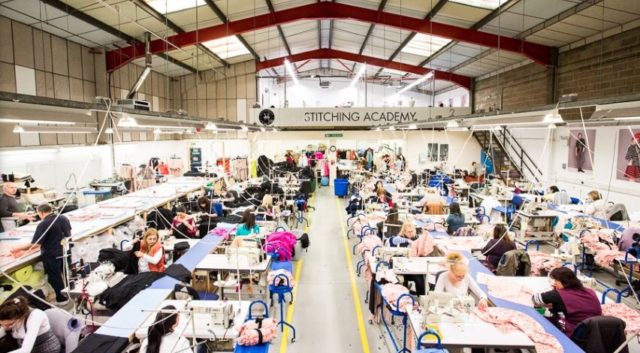Fashion Week is here – and eagle-eyed fashionistas will be closely paying attention to new trends and the styles of tomorrow.
But according to one waste and recycling company which sits on the cutting edge of fashion, the age of cheap fast fashion in the shops is coming to an end.
That’s being replaced by a new era of preloved clothing, says Divert.co.uk, with consumers changing their habits away from the high street and online fast-fashion retailers.
“Fast fashion means tonnes of lower quality goods going straight from wardrobe to the rubbish tip,” says Divert.co.uk spokesperson Mark Hall, “it’s the most tremendous waste of time, money and resources.”
Instead, he says, people are turning to quality goods being sold online on Facebook Marketplace, Ebay and Vinted. “Why throw it out when you can make money on it?” he says.
The end of fast fashion?
Fast fashion specialises in regular changes to clothing lines, often with cheaply made garments and lower price tags, to keep consumers decked out in the latest wears without costing a small fortune.
But this all comes at an environmental cost, with the industry producing more CO2 emissions a minute than driving a car around the world six times.
And if that hasn’t shocked you, here are some more unsustainable facts about the fashion industry:
It takes over 2,700 litres of water to produce just a single t-shirt.
The textile industry uses around 93 billion cubic metres of water a year – enough to fill 37 million Olympic swimming pools.
Only 12% of clothing materials get recycled.
On average, every person in the UK throws 3.1kg of textiles away each year – making the UK the fourth highest in Europe.
UK waste specialists Divert.co.uk know only too well the side effects of fast fashion, with heaps of clothes ending up in landfill each year and instead of being correctly recycled.
Company spokesman Mark Hall “360,000 tonnes of decent clothing a year ends up in the dump here in the UK, mostly because fashion trends move so quickly, and once people are done with something they chuck it.”
And fast fashion being what it is, many people think the garments are too low quality to give to a charity shop.
But fortunately, a new poll conducted by Divert.co.uk found that over 60% of 1,000 people asked were happy to buy preloved items of clothing, which mirrors other consumer polls saying that the second-hand clothing market is looking to overtake the fast fashion movement by the end of the decade.
Would you consider buying second-hand clothing?
Yes – 62%
No – 11%
I could be persuaded – 27%
Hall says: “Second-hand clothing is nothing new, older generations grew up wearing hand-me-downs from friends and family, and current movements such as clothes swapping are gaining popularity on social media.
“So it’s no surprise to see that people are willing to give older garments a second life. And there are plenty of reasons why now more than ever people are making the switch. People are trying to make eco-friendly decisions, so they’re turning to charity shops and second-hand sellers to cut down their own impact on the planet and reduce carbon footprints.”
“And right now with the cost of living crisis, buying clothes in charity shops is not just a trend but a necessity for those looking to style new outfits in a pinch. And online gives people the chance of making a few pounds on their old clothes.”
But for those garments that have well and truly had it, all Divert asks is for you to look to your local recycling centres and make sure the textiles are correctly disposed of. This way they can be broken back down into their natural fibres and can be remade into new materials.
Hall: “Instead of constantly creating more and more new things, we need to be making the most of what we already have, right down to the bare bones of it. The more we can do this, the less waste we will make, and the better the environment for us all”.
But for the more ethically conscious fans of Fashion Week, make sure you check out the Oxfam show, which will feature a mix of “second-hand designer items, vintage finds and some pre-loved high street clothes”.




